The 52-Pi range of Ice-Tower coolers are an eclectic mix of low-profile coolers, and in the case of the $15 Ice-Tower Cooler for Raspberry Pi 5, a 1960s muscle car aesthetic. This isn’t the first time that we have seen this type of cooler. There was also a version for the Raspberry Pi 4. A version that we hacked to work with the Raspberry Pi 5, but this official version is much safer than our hastily built creation.
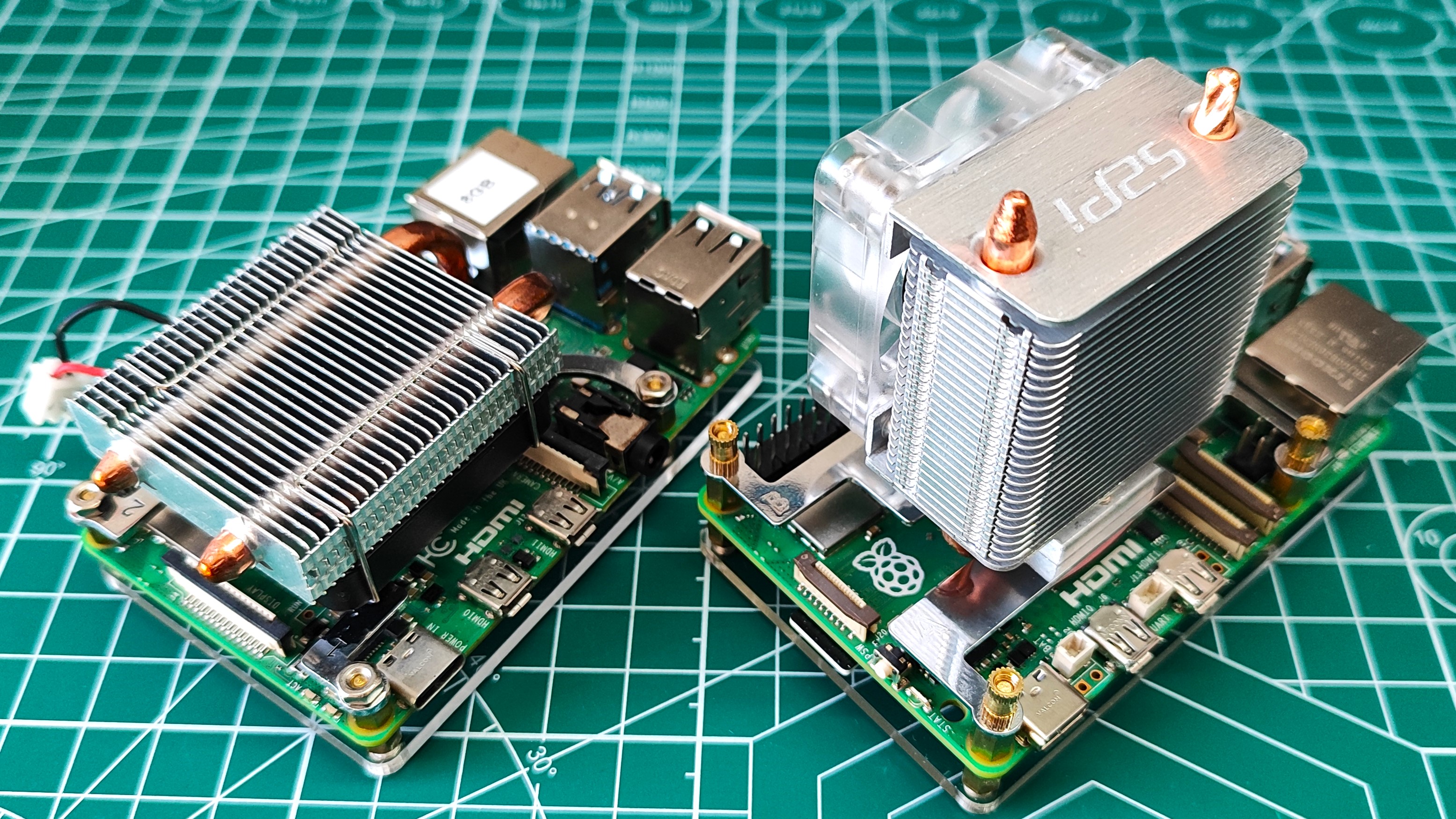
The promise of a cooler such as this is extreme cooling. It screams extreme with its muscle car looks and bold framework structure. But can this extreme cooler tame the Raspberry Pi 5? To learn that we need to put it on the bench and take it for a test drive.
Ice-Tower Cooler for Raspberry Pi 5 Specifications
| Cooling | Passive cooling fins, 35mm PWM fan with RGB | Row 0 – Cell 2 |
| Construction | Aluminum heatsink and fan assembly, Copper heat pipes to SoC, Thermal pad on SoC, Aluminum framework to support cooler | Row 1 – Cell 2 |
| Port Access | Access to all ports, Camera / Display ports are tight | Row 2 – Cell 2 |
| Dimensions | 75 x 66 x 55 mm (Assembled) | Row 3 – Cell 2 |
Ice-Tower Cooler Design
Looking like an air-intake for a muscle car, the Ice-Tower cooler is an impressive sight. The aluminum heatsink dominates the Raspberry Pi 5’s form factor and it includes frameworking to support the cooler above the SoC. This frameworking support structure is necessary for keeping the heatsink and copper heatpipes on the SoC, and for routing around the various chips and connectors on the board.
Assembly is easy, just a few minutes with a screwdriver and you have a hot-rod cooler for the fastest Raspberry Pi yet! The RGB fan connects to the new fan connector, leaving the GPIO free for use. The RGB element is a simple slow color-changing RGB LED, the sort that I used to teach kids electronics many years ago.
The included acrylic base is there to protect the underside of the Pi 5 from errant short circuits, and your desk from damage.
Port Access
The cooler doesn’t get in the way of all the major ports. But, it does make access to the camera / displays ports a little trickier. There is space to get a fingernail between the frameworking and the plastic locks for the connectors, but it is tight. The PCIe port is relatively easier to access and the open design of the cooler means that we can add an NVMe SSD board underneath the Pi 5.
What about the GPIO? Well dropping a HAT directly onto the GPIO is out of the question. The cooler will get in the way of every HAT. To use a HAT you’ll need a breakout board such as Pimoroni’s Black HAT Hacker. Accessing the GPIO on a pin-by-pin basis is easily done, but we would ensure that our wires don’t stray into the spinning blades.
Thermal Performance
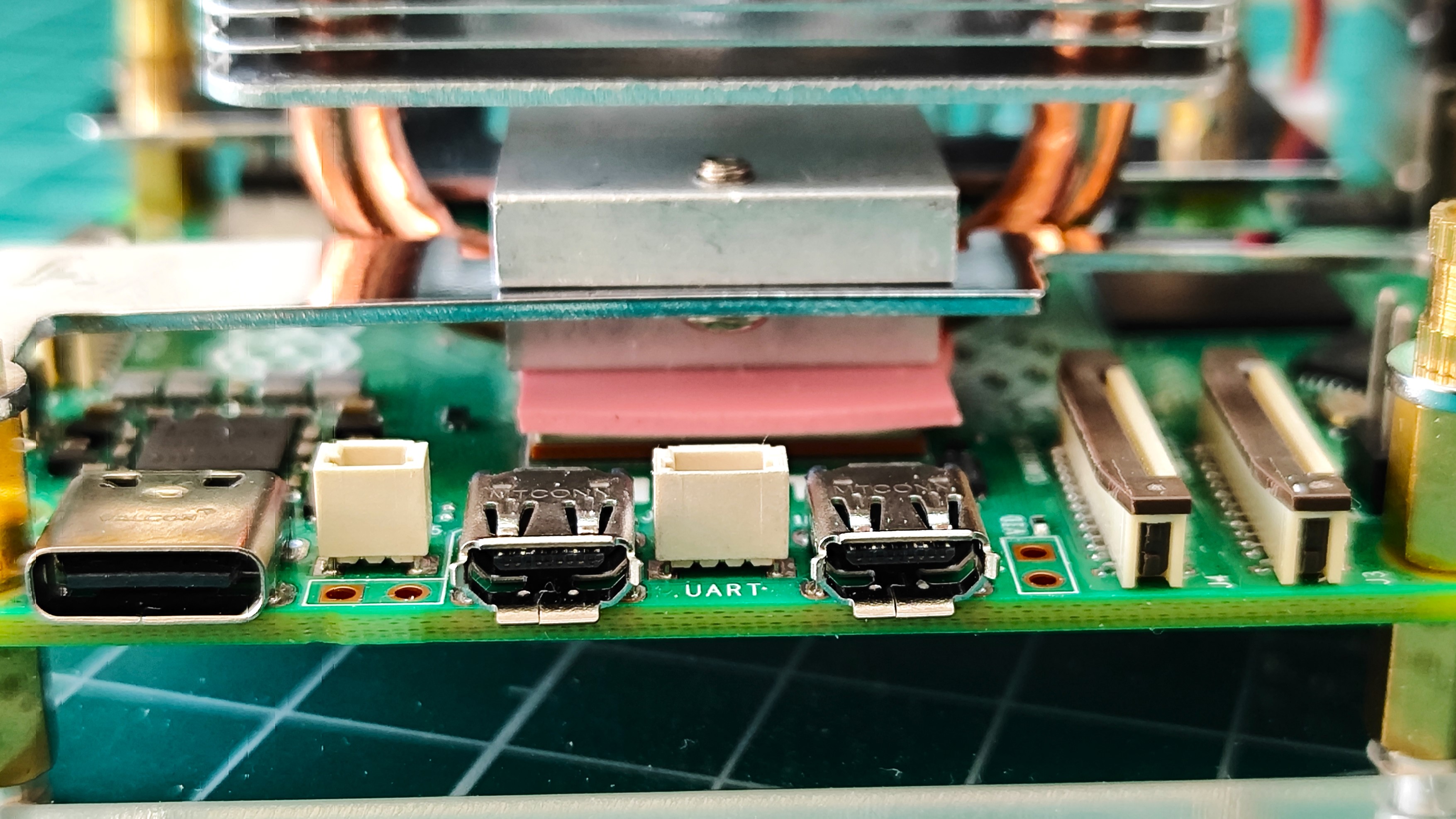
For our tests we powered up the Raspberry Pi and left the temperature to settle for five minutes. Then we ran an automated script which recorded the idle temperature for one minute, then ran a five minute stress test on all cores. Then we allowed a one minute cooldown period and recorded the resting temperature. All of the data was logged to a CSV file which we used to analyze the data.
Does a hot-rod inspired cooler tame the Raspberry Pi 5? Yes, and no. At idle we recorded a CPU temperature of 34 degrees Celsius, matching the lowest idle temperature of the Argon Neo 5 case. The difference between the Neo 5 and this cooler is that the Neo 5 is a full case which also cools the PMIC and RP1 chips. The Ice-Tower only cools the SoC.
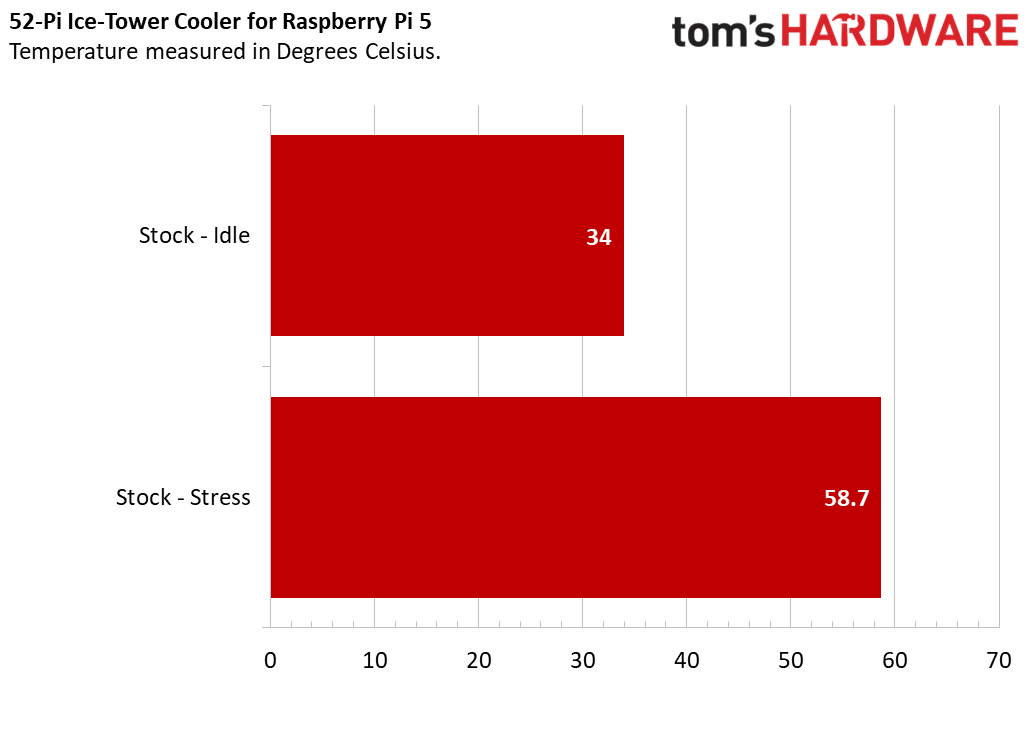
At stock speed and under stress, the CPU hit 58.7°C, the hottest temperature recorded in the current crop of Raspberry Pi 5 coolers and cases. We made sure that the cooler was firmly connected to the IHS of the Raspberry Pi 5’s SoC but it seems that is all it could manage.
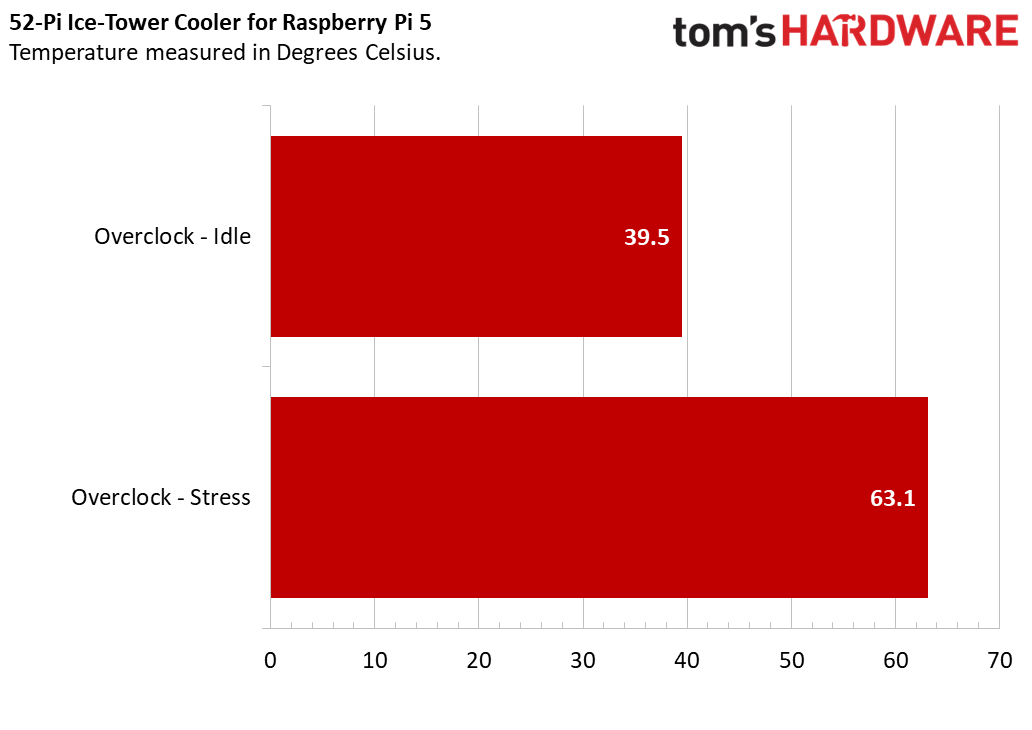
Bottom Line
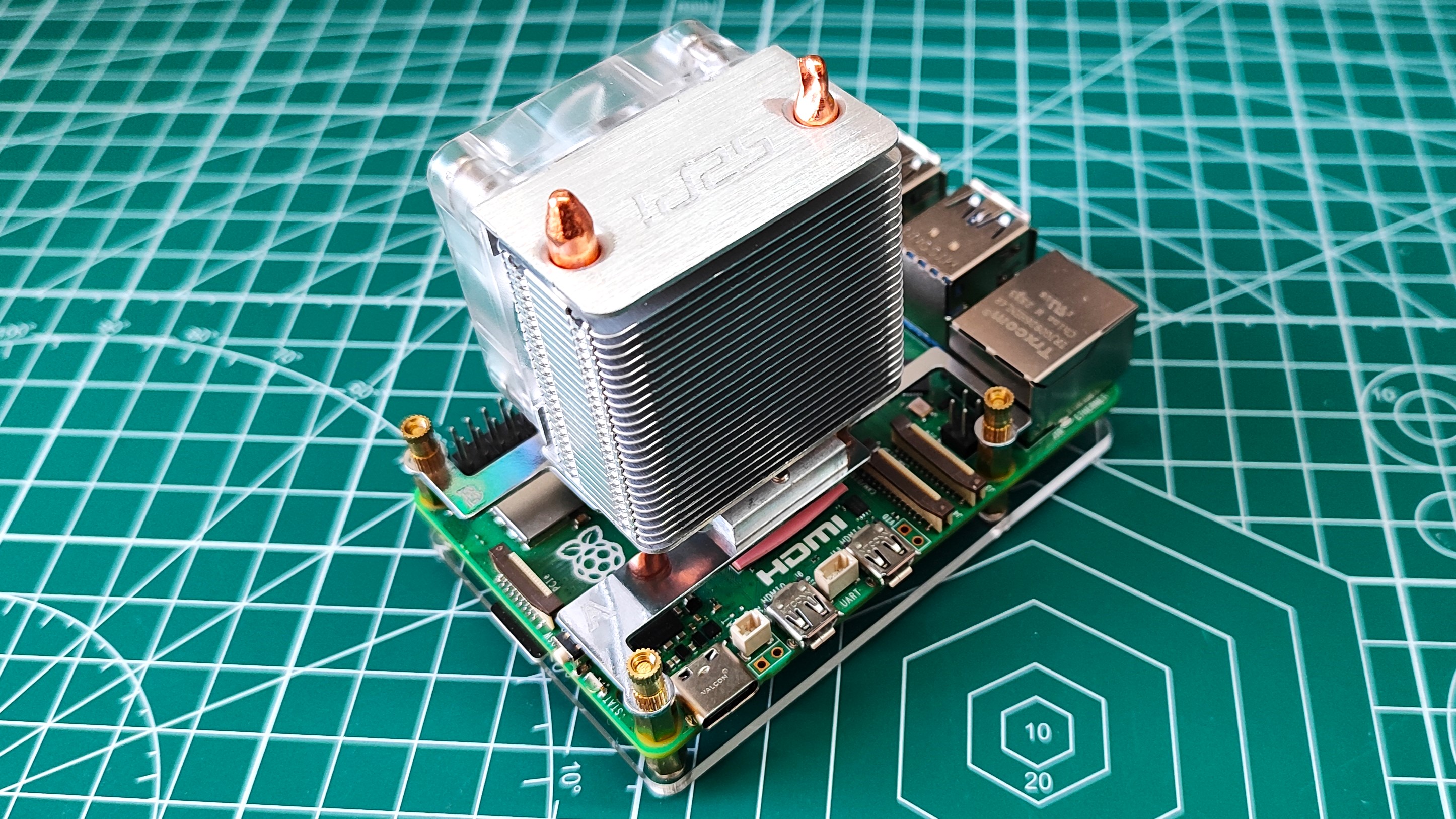
This leaves us with the question, “Is the Ice-Tower Cooler worth using?” The short answer is no. The longer answer is that this is more of a show pony than a workhorse. It looks cool, but it doesn’t cool as well as we would’ve hoped.If 52-Pi can make a version of its low profile cooler, as we have used on the Raspberry Pi 4, then there could be some redemption.
Right now this cooler looks great, and is an imposing presence on the Raspberry Pi 5. The trouble is that it doesn’t cool any better than a case, which offers additional protection. We applaud the use of the fan connector and the rerouted frameworking provides decent access to the ports.
This article was originally published by a www.tomshardware.com . Read the Original article here. .


